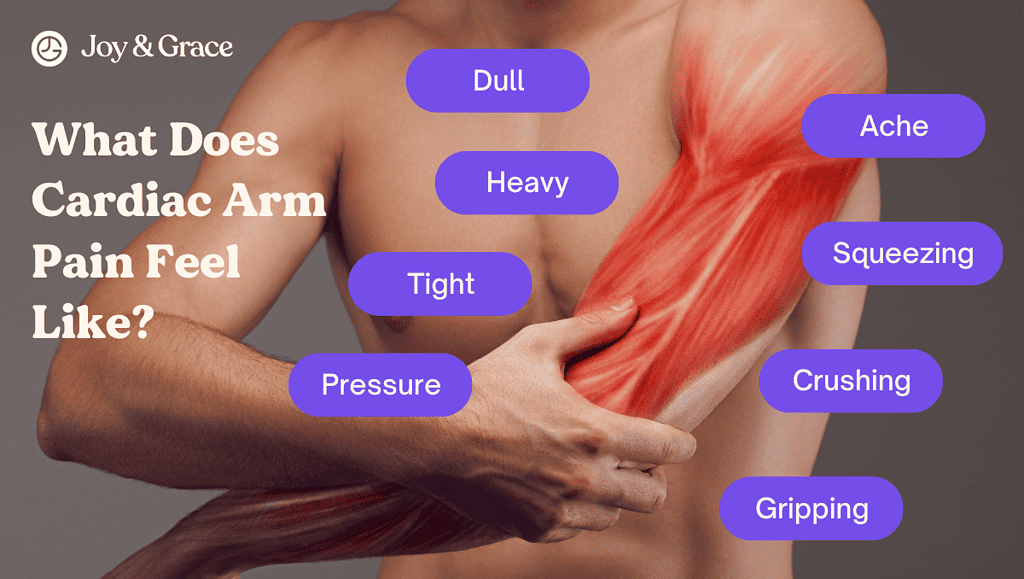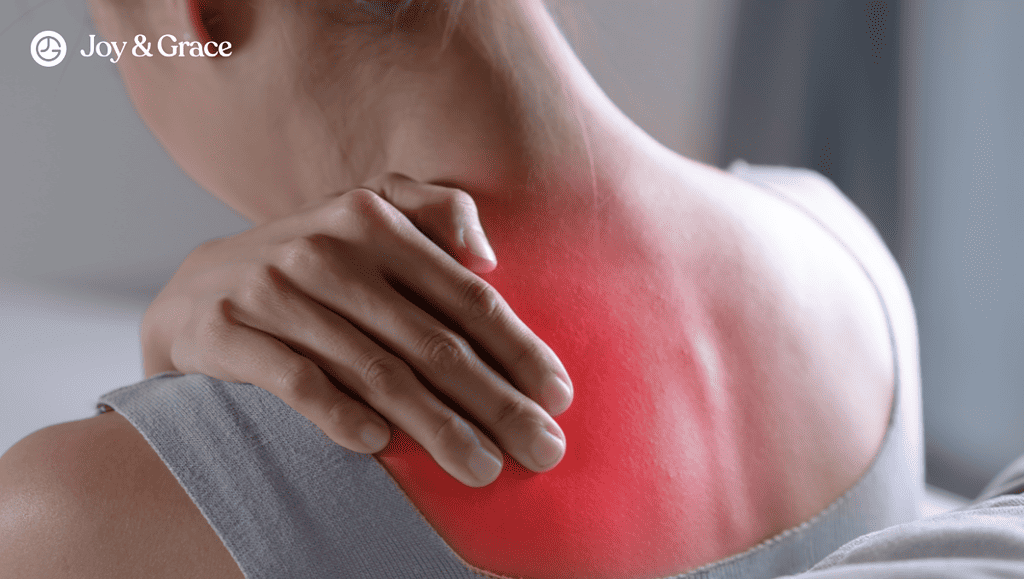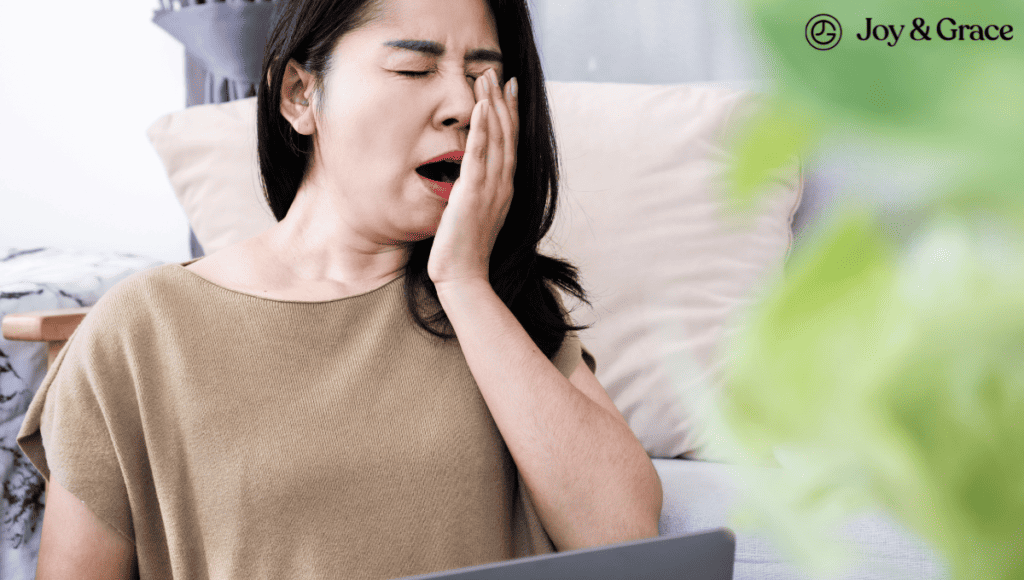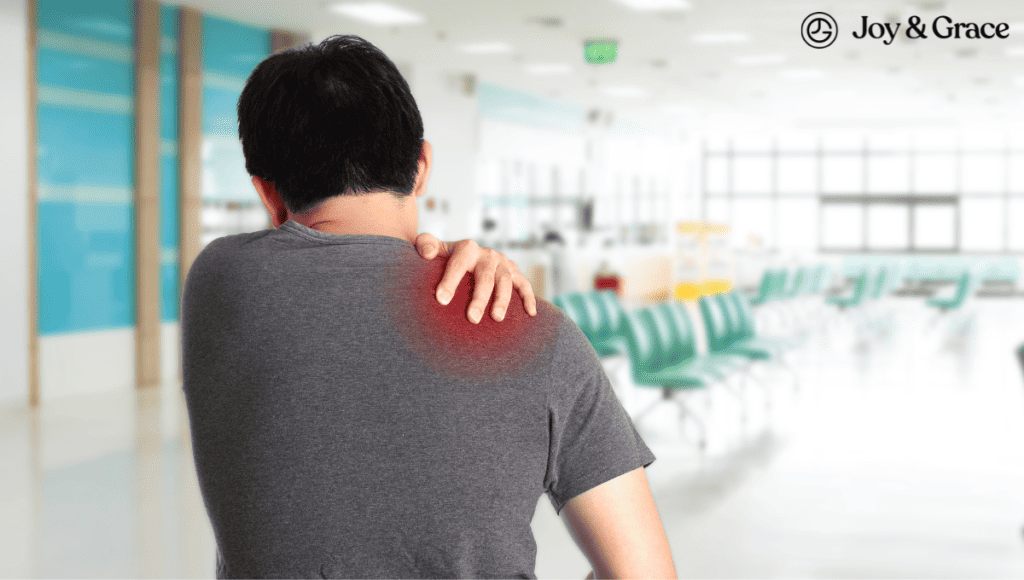Experiencing pain or discomfort in your body can be a cause for concern, especially when it affects your left arm and shoulder blade.
In this blog, we'll delve into the potential reasons behind pain in the left arm and shoulder blades, exploring various factors that could contribute to these sensations. After reading this article, we hope you can make informed decisions to help you find relief.
Why Do I Have Pain in My Left Shoulder Blade and Left Arm?
You may have pain in your left arm and shoulders for many reasons. Two of the most common causes are:
- Muscle strain
- Poor posture
While the ones we mentioned above are the most likely suspects, pain in your left arm and shoulders may also be due to more severe conditions, such as:
- Rotator cuff tear or injury
- Fractured shoulder and arm bones
- Nerve damage
- A herniated disc in the spine (which could also lead to nerve problems)
- Arthritis (both osteoarthritis and rheumatoid arthritis)
- Frozen shoulder (also known as adhesive capsulitis)
Can Shoulder Blade Pain Radiate Down the Arm?
The answer is yes; shoulder blade pain can radiate down the arm. And while not always, it’s often a sign of a more serious condition. It can indicate a disc or nerve compression in the cervical spine.
Shoulder blade pain that travels down the arm can also be a heart attack or angina symptom.
How Do I Know if My Arm and Shoulder Blade Pain Is Heart Related?
First, it’s important to note that arm pain alone is not a definitive sign of a heart condition. In fact, isolated shoulder pain is a very rare and unusual symptom of a heart attack. As we mentioned above, it is usually caused by issues with the arm's muscles, joints, or nerves.
However, if you are also experiencing chest pain or discomfort that is radiating to your arm and shoulder blade, it may be a sign of a heart problem.
The main heart-related causes of arm and shoulder pain are anginas and heart attacks.
Anginas occur when the blood flow to the heart is temporarily reduced, usually due to a blockage in the arteries. This can cause chest pain or discomfort, sometimes spreading to the arm or shoulder.
On the other hand, a heart attack happens when there is a complete blockage in the arteries that supply blood to the heart. This can result in severe chest pain or pressure, and the pain may radiate to the arm or shoulder as well.
Interestingly, some studies suggest that shoulder pain during a heart attack may be influenced by gender. For example, according to a study, women were more likely to have arm and shoulder pain on either side during a heart attack. According to another study, women report more pain in their left arm during a heart attack.
However, a study from 2009 suggests that the gender differences in the prevalence of arm and shoulder pain during a heart attack were not significant.
Other symptoms that may indicate a heart problem include:
- Shortness of breath or difficulty breathing
- Nausea
- Vomiting
- Dizziness
- Lightheadedness
- Sweating
- A feeling of impending doom
If you are experiencing multiple symptoms, it’s important to seek medical attention right away.
What Does Cardiac Arm Pain Feel Like?

In many cases, cardiac arm pain is described :
- Dull
- Heavy
- Tight
- Pressure
- Ache
- Squeezing
- Crushing
- Gripping
However, you may also experience a burning or stabbing pain. Another key feature of cardiac arm pain is that it often radiates from the chest to the arm, as we mentioned earlier. The pain may start in the chest and then spread down the left or both arms.
What Part of Your Arm Hurts When You Have Heart Problems?
First, when someone experiences heart problems, they can feel pain or discomfort in both arms. However, it's important to note that the pain is typically diffuse and not confined to a specific area or part of the arm.
This means that the sensation may spread or radiate across the arms rather than being localized to one particular spot.
Still, it's always recommended to seek medical attention if you're experiencing any unusual or persistent pain, especially in relation to heart health.
Can Anxiety Cause Left Arm Shoulder Blade Pain?
Yes, one of the possible culprits of left arm shoulder blade pain can also be anxiety. Although it's more associated with psychological symptoms, it can also have physical manifestations.
According to a study, patients with unexplained arm pain experienced more intense and sharp pain when resting and moving their arms. They also felt more anxious, helpless, and relied on extreme coping mechanisms to deal with the pain. Furthermore, they tended to complain more about physical symptoms.
When Should I Worry About Left Arm And Shoulder Pain?
While some arm and shoulder joint pain may be temporary, it's important to pay attention to any symptoms that persist or worsen over time.
Talk to your healthcare provider if you're experiencing frequent or severe pain in your arm and shoulder, especially if it always gets worse when stressing yourself mentally or physically. They can help determine the underlying cause of your pain and develop a treatment plan to help alleviate your symptoms. They can help determine the underlying cause of your pain and develop a treatment plan to help alleviate your symptoms.
And as we mentioned above, seek immediate medical attention if you’re experiencing any of the following:
- Chest pain
- Difficulty breathing
- Nausea
- Vomiting
- Dizziness
- Lightheadedness
- Sweating
- A feeling of impending doom
Lastly, it's always better to err on the side of caution. If you’re experiencing left arm and shoulder blade pain, and you have doubts about whether it's heart-related, seek medical attention immediately.
How do I Get Rid Of Pain In My Left Shoulder And Arm?
If your arm and shoulder pain isn’t from anything serious, you can try the following self-care measures:
- Rest
Avoid activities that worsen the pain and give your shoulder and arm proper rest. Repetitive activities of overuse or straining of the shoulder muscles can exacerbate the pain.
- Ice or heat therapy
Apply an ice pack or a heating pad to the affected area. Ice can help reduce inflammation and numb the area, while heat can promote blood flow and relaxation. Alternate between the two, using each for about 15-20 minutes at a time.
- Pain medications
Over-the-counter pain relievers may help alleviate the pain. Just make sure to follow the recommended dosage.
- Gentle stretching and exercises
Perform gentle range-of-motion exercises and stretches to relieve stiffness and improve flexibility. Be cautious not to overexert or strain the affected area.
- Posture correction
Ensure you maintain proper posture while sitting and standing. Poor posture can contribute to shoulder and arm pain. Sit or stand up straight and avoid slouching.
- Ergonomic adjustments
Make sure your workspace is ergonomically friendly. Adjust your chair height, desk, and computer setup to maintain proper alignment of your shoulders and arms.
- Massage
Consider gentle self-massage or seek the assistance of a licensed massage therapist to help you relax and relieve the pain.
- Stress management
Stress and anxiety can contribute to muscle pain. Engage in stress-relieving everyday activities such as deep breathing exercises, meditation, yoga, or engaging hobbies.
Takeaway
Pain in the left arm and shoulder blade can stem from multiple sources, ranging from musculoskeletal issues to underlying medical conditions. It's crucial not to ignore any symptom, as they could indicate something more serious that requires medical attention.
By consulting with a medical professional, you can undergo physical examinations to receive accurate diagnoses and also discuss tailored treatment options to alleviate your discomfort. Remember, proactive care and timely intervention are key to maintaining your overall well-being.















